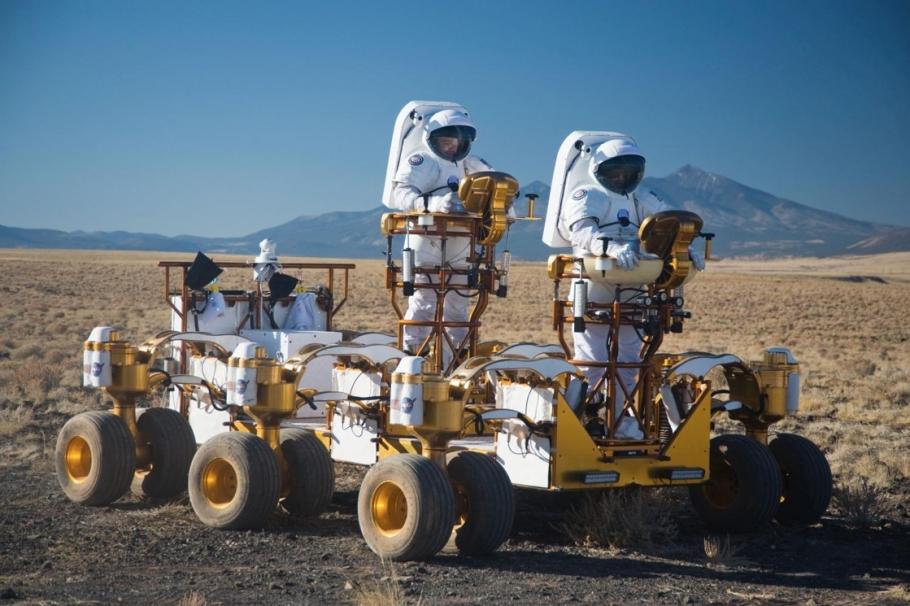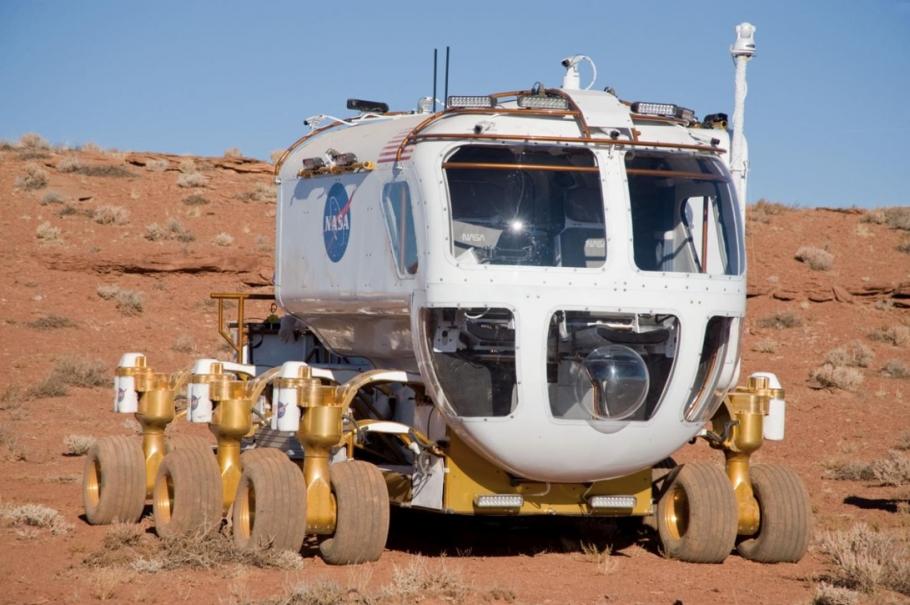What will the astronauts who return to the Moon with NASA’s Constellation program drive? I had a chance to find out last October as a member of NASA's Desert Research and Technology Studies (Desert RATS) during the field test of the Lunar Electric Rover (LER) at Black Point lava flow in Arizona.
During the first week, two crews, each consisting of one astronaut-commander and one geologist, tested the LER in the unpressurized rover (UPR) configuration, where the vehicle is driven standing up with the spacesuits locked securely into turrets. The turrets rotate 360 degrees so the crew can make observations to the side or behind them as they drive, a capability the Apollo astronauts did not have. The UPR allows crews to get in and out of the vehicle quickly at each geologic stop, but the disadvantage is that crew members remain in their spacesuits for the entire duration of the extra vehicular activity (EVA).
The final week was spent testing the LER in the Small Pressurized Rover (SPR) configuration, above, on a long duration lunar mission simulation. I served as the crew geologist alongside the mission commander, astronaut Mike Gernhardt. We lived and worked in the SPR for three days, with daily schedules modeled after Apollo and International Space Station missions. The crew followed routes to various geologic stations to conduct an extensive scientific survey of the area, covering a total distance of about 35 miles. The SPR offers several advantages over the UPR such as driving and making science observations without wearing a suit, sleep stations, meal options, a bathroom, and the ability to quickly ingress and egress the spacesuit. Crews enter the suits, which are attached to the rear of the SPR, through a hatch in the back of the suit and use manual levers to close the hatch and unlatch from the SPR. This eliminates the need for an airlock. In September 2009, the Desert RATS team will conduct another field test at Black Point lava flow, with two crew members living inside the LER on a 14 day mission. Watch this video presentation on Brent’s excellent adventures driving these futuristic Moon rovers.
Meet Brent and the Museum’s other planetary scientists in person at Countdown to the Moon Day on Thursday, July 16 from 10 a.m. – 3 p.m. in the National Mall building in honor of the 40th Anniversary of the Apollo 11 Moon landing. Here is a NASA video of the Desert RATS in action.
See also a related NASA EDGE podcast.

